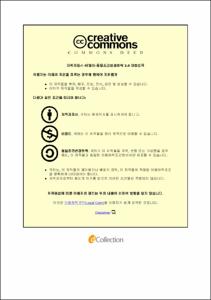A Study of Military Interventions in Sudan: Focusing on three Coups from 1956 to 1989
- Abstract
- This research aims to identify the fundamental reasons that prevented the establishment of a democratic system in Sudan since its independence in 1956 to the present day. The main feature of Sudanese political scene is a succession of military coups (1958, 1969, and 1989) which influenced the democratic process. The paper will thus attempt to address the main economic and political factors that led to these coups through a descriptive and analytical approach of these factors. As the political history of Sudan has been marked by racial and civil wars, this research will analyze, under the light of both democracy theory and military coups theory, the succession of events and try to identify the underlying reasons behind the lack of opportunity for a steady implementation of the democratic process and the resurgence of military coups. As a conclusion, the research will try to explain how the transformation of the various religious communities into political parties, and the subsequent conflicts between them for a consensual power, which they failed to obtain through regular elections, allowed the military leaders and the army to plot and overthrow the coalition governments at three occasions (1958, 1969, 1989), resulting in the absence of a stable economic system and protection of the democratic process.
- Issued Date
- 2018
- Awarded Date
- 2018. 8
- Type
- Dissertation
- Publisher
- 부경대학교
- Affiliation
- 부경대학교 대학원
- Department
- 대학원 국제지역학과
- Advisor
- 김동수
- Table Of Contents
- 1. Chapter One: INTRODUCTION 1
1.1. Purpose of the Study 1
1.2. Literature Review 5
1.3. Scope of the Study 12
1.4. Methodology 12
1.5. Organization of the Study 14
2. CHAPTER TWO: THEORETICAL FRAMEWORK 15
2.1. Democracy 16
2.1.1. What is democracy? 16
2.1.2. Types of Democracy 19
2.1.3. Democratization 20
2.1.4. Democracy and Development 22
2.1.5. Democratization in Africa 23
2.2. Theories Related to Military Intervention 24
2.2.1. Concept of Military Intervention 24
2.2.2 The socio-economic development theory 25
2.2.3. Political development theory 26
2.2.4. Military Centrality 27
2.2.5. Internal conflict based on structural characteristics of the society 28
2.2.6. Regional differences 29
2.3. The leverage that influenced the frequency in military interventions in the case of Sudan 29
3. CHAPTER THREE: HISTORICAL ANALYSIS 31
3.1. The Turkiyah: Turco-Egyptian Rule, 1821–85 31
3.2. The Mahdiyya, 1885–98 31
3.3. The Anglo-Egyptian Condominium, 1899–1955 33
3.4. The Rise of Sudanese Nationalism 35
3.5. The Road to Independence 36
3.6. The South and the Unity of Sudan 37
3.7. The Independent and Political Sudan 39
3.8. Aboud Military Coup (The First Coup) 40
3.9. The May Revolution of 1969 (The second Coup) 41
3.10. Umar al-Bashir and the Islamist Revolution of 1989 (The Third Coup) 43
4. CHAPTER FOUR: Comparison of Three Military Coups 49
4.1. First Democratic period 1953-58 49
4.2. The second Democratic Period (1965-1969) 52
4.3. The third Democratic Period (1985-1989) 57
5. Chapter Five: CONCLUSION 65
5.1. Summary of the Key Findings 65
Bibliography 72
- Degree
- Master
- Files in This Item:
-
-
Download
 A Study of Military Interventions in Sudan: Focusing on three Coups from 1956 to 1989.pdf
기타 데이터 / 673.01 kB / Adobe PDF
A Study of Military Interventions in Sudan: Focusing on three Coups from 1956 to 1989.pdf
기타 데이터 / 673.01 kB / Adobe PDF
-
Items in Repository are protected by copyright, with all rights reserved, unless otherwise indicated.